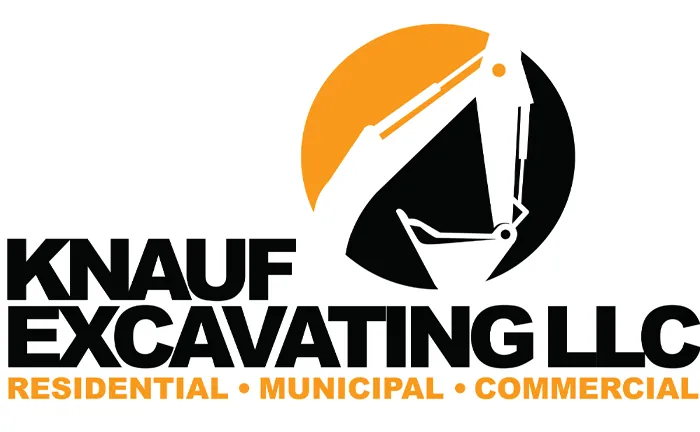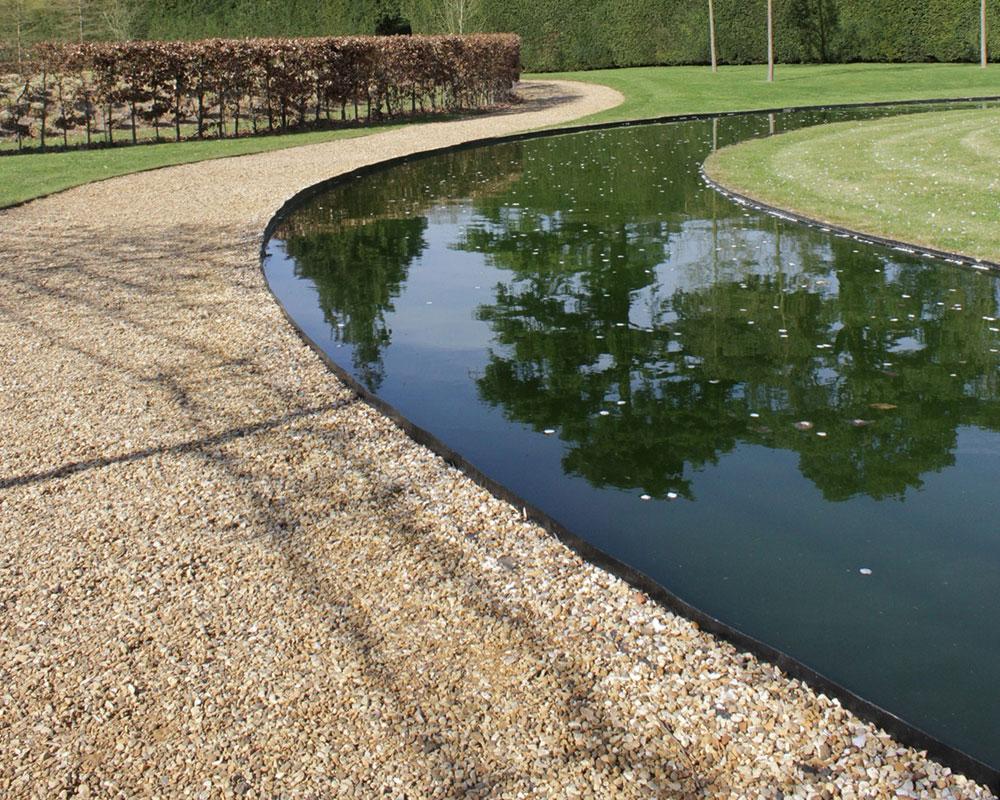
Serving Wisconsin Counties: Marathon, Oneida, Villas and Lincoln Counties
Pond Construction near Marathon County, Wisconsin
Knauf Excavating LLC is Committed to superior quality and results!

AVOID COSTLY MISTAKES:
Do NOT hire an excavating contractor without first reading our free guide:
The ULTIMATE Excavation & Septic "Success Guide."

Pond Construction near Marathon County: A Practical Guide for Wisconsin Properties
If you’ve dreamed about a clear, dependable pond that looks natural and works all year in Wisconsin weather, this guide is for you. We’ll cut through the fluff and show how thoughtful planning, solid excavation, and proper drainage make the difference between a murky pit and a long-lasting water feature. Whether you want a fishing pond, wildlife habitat, livestock water, or a backyard showpiece, understanding local soils, slopes, and stormwater rules across Marathon County sets projects up for success.
How Can We Help?


Benefits of Pond Construction near Marathon County, Wisconsin
A well-built pond does more than look good. It can slow runoff, reduce erosion, and recharge groundwater on sandy or loamy sites. It creates habitat for pollinators, birds, and amphibians. It also adds recreation—think fishing, skating, or simply a quiet place to breathe. On rural tracts, livestock gain reliable water and shaded relief. On residential or hobby farms, a pond can anchor landscaping, define outdoor rooms, and lift property value when it’s built with proper liners, compaction, and spillways ...
Energy and time savings matter too. With the right grade and shelf design, you’ll fight less algae, enjoy clearer water, and spend less on chemicals. Good access points make maintenance safer. A stout dam and emergency overflow protect driveways, culverts, and nearby structures when thunderstorms hammer central Wisconsin.
Why Hire a Professional Pond Construction near Marathon County, Wisconsin
Moving thousands of cubic yards of soil sounds simple until a bucket meets saturated subgrade. Local crews understand glacial tills, clay lenses, perched water tables, and where a liner or bentonite is smarter than wishful thinking. Professionals bring GPS grade control, compaction testing, and the right iron to shape shelves, islands, and spillways quickly and safely. They also coordinate permits, call in locates, and design erosion controls that pass inspection.
Hiring experienced pond builders reduces risk you can’t see at the surface: dam seepage, shoreline slump, inlet scour, culvert failure, and undersized overflows. You gain practical design advice—how deep to dig for winter fish survival, how to orient against prevailing winds, where to add windbreaks, and how to keep beaches stable. The result is a pond that fills, holds, and sheds heavy rain responsibly, and looks natural in every season.
The Step-by-Step Process for Pond Construction near Marathon County
Discovery and goals. Define purpose: fishing, livestock, wildlife, irrigation, swimming, or aesthetics. Discuss size, average depth, shelves, dock spots, and budget.
Site evaluation. Review topo, drainage paths, soils, vegetation, and access. Probe depth to groundwater and note nearby wells, septic systems, and utilities.
Preliminary design. Map basin shape, depths, dam location, core trench, and inflow/outflow features. Plan for sediment forebays to keep the main basin clear.
Permitting and approvals. Coordinate with local and state authorities for earthwork, shoreline, wetland, and dam safety requirements as needed.
Mobilization and erosion control. Install silt fence, stabilized entrances, and diversion swales. Flag trees to save and mark no-disturb zones.
Excavation and shaping. Strip topsoil, dig to design grade, and compact lifts. Cut shelves for habitat and safety; shape coves to break wind fetch.
Liner strategy. Choose native clay compaction, bentonite amendment, or synthetic liner based on soils and goals.
Inlets, spillways, and structures. Install culverts, armored overflows, standpipes, or siphons sized for Wisconsin storm events.
Finishing and stabilization. Backfill, topsoil, seed, and blanket. Add rock at high-energy edges, beaches, or culvert outlets.
Fill and balance. Fill slowly, monitor slopes, and seed buffer plants. Test water quality, introduce aeration if needed, and stock fish per goals.
See Our Excavation & Septic Services

✔️ Commercial Excavation
✔️ Residential Excavation
✔️ Swimming Pool Excavation
✔️ Basement Digging
✔️ Basement Backfill
✔️ Shoreline Restoration
✔️ Driveway Construction
✔️ Municipal Excavating
✔️ Snow Plowing Service
✔️ Demolition
✔️ Large Pond Construction
✔️ Small Pond Construction
✔️ Dozer Work
✔️ Septic Inspections
✔️ Septic System Pumping
✔️ Septic Installs Traditional Systems
✔️ Septic Tanks - Aerobic Systems
Quality Services Launched FAST!

✔️ Septic Tanks - Plastic/Poly
✔️ Septic Tanks - Concrete
✔️ Drain Field Replacement
✔️ Forestry Mulching
✔️ Grading, Lot Clearing
✔️ Retaining Walls
✔️ Sewer Repairs
✔️ Drainage Systems
✔️ Concrete Flatwork
✔️Driveways, Sidewalk, Foundations
✔️ Foundation Repairs
✔️ Full Site Preparation
✔️ Trenching
✔️ Utilities Trenching
✔️ Grade Shed Pad
✔️ Site Construction
What Are You Waiting For?
Design Choices That Pay Off in Wisconsin
Depth: Aim for varied depths with at least one basin in the 10–14-foot range for fish and winter oxygen.
Shelves: Two to three shelves create habitat and safer entries while discouraging sudden drop-offs.
Wind: Align long fetches across the wind to prevent shoreline erosion.
Access: Plan a stable launch, dock, or stone steps for year-round use and maintenance.
Safety: Gentle slopes near gathering areas, clear signage, and lifesaving rings when swimming is planned.
Materials, Equipment, and Timeline
Typical equipment includes excavators, dozers with GPS, compactors, haul trucks, and pumps for dewatering. Materials may include clay, bentonite, geotextile, riprap, culverts, and standpipes. Small residential ponds can shape up in one to two weeks once permitted and mobilized; larger multi-acre builds take longer. Weather, groundwater, and material haul distances influence the schedule more than anything else.
Maintenance Made Simple
Every pond needs routine care: inspect dams and spillways after heavy storms, mow embankments to spot burrows, and manage nutrients with buffers and limited fertilizer use nearby. Aeration or a small fountain can improve circulation. Keep debris out of inlets, remove invasive plants early, and dredge forebays before the main basin fills with silt.
Cost Factors to Plan For
Budget depends on size, depth, soil conditions, liner needs, haul distances, access, and structures like docks or beaches. Permitting, erosion control, and restoration also add line items. Smart planning often lowers lifetime cost: build adequate depth and overflow from the start, and you’ll avoid emergency fixes later.
How to Choose a Team for Pond Construction near Marathon County, Wisconsin
Look for clear scopes, realistic timelines, and transparency on change orders. Ask for examples of clay compaction tests, spillway sizing calcs, and photos of completed embankments a year after seeding. Make sure the plan covers erosion control, inflow sediment capture, and access for future maintenance. Good communication matters as much as equipment.
Hours: Mon-Fri 7AM-5PM
Extended hours by appointment only.
Address: 1250 W. Campus Dr. Wausau, Wisconsin 54401
All rights reserved | Client Support Area